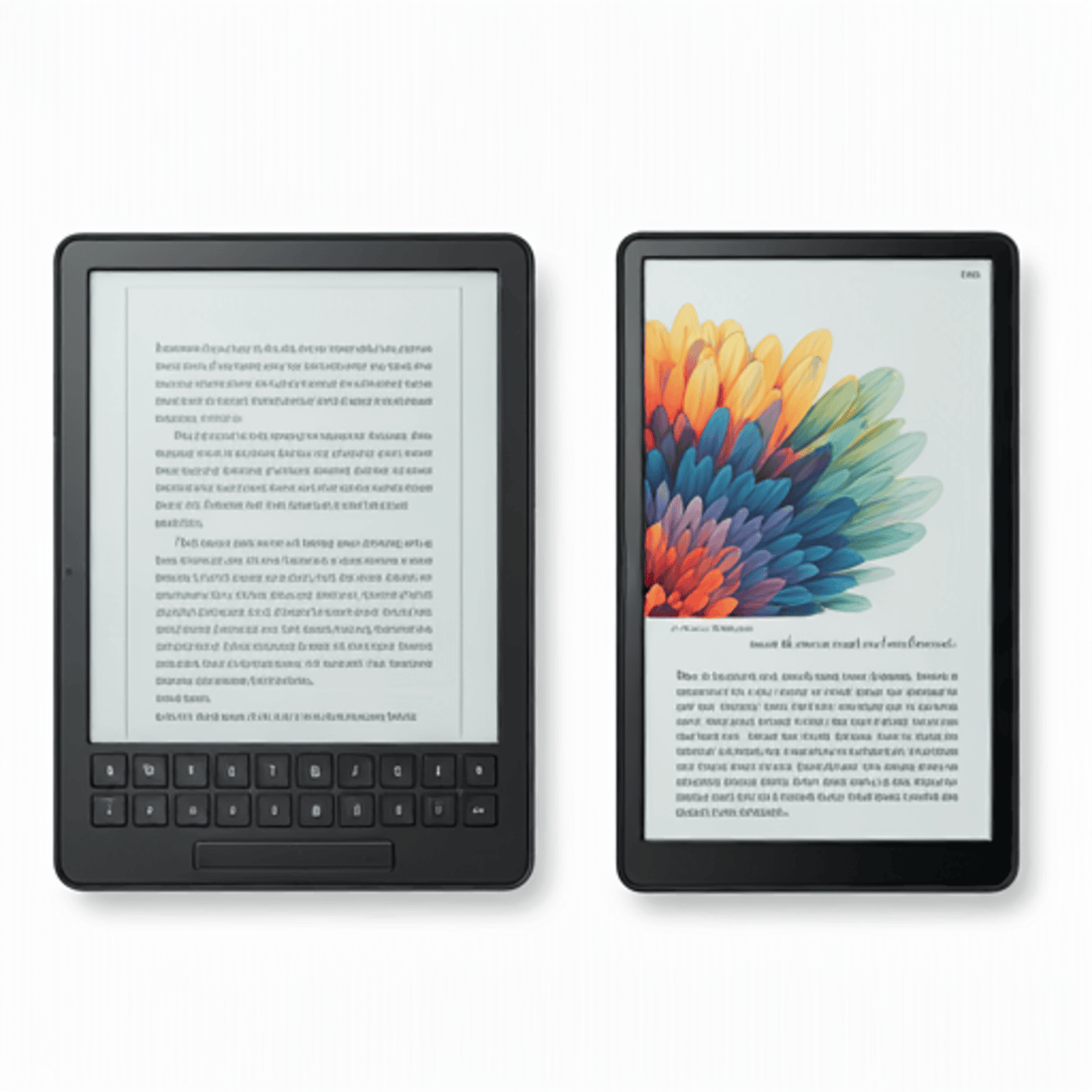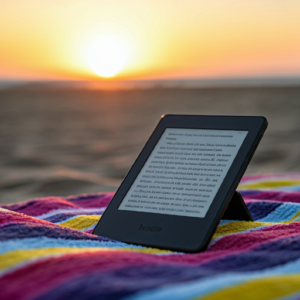If you’re a blogger, you’ve likely come across the ongoing debate between e-ink vs. LCD e-readers. With no clear winner, many readers are left searching for the ideal choice. This article aims to clarify which screen technology—e-ink or LCD—best suits different reading needs. E-ink displays mimic the look of real paper, offering a highly realistic reading experience and being gentler on the eyes compared to traditional computer screens. Unlike LCDs that use backlighting, e-ink reflects natural light, making it easy to read even under bright sunlight.
On the other hand, LCD e-readers shine with their vivid color displays and multimedia capabilities. LCD backlit screens offer a great reading experience in low-light conditions, and they are versatile enough for web browsing and watching videos. Each screen type—e-ink vs. LCD e-readers—has its strengths and is suited for different purposes. Before making a purchase, it’s crucial to decide how you’ll use the screen. By the end of this article, you’ll have the information needed to choose the best e-reader screen for your needs.
Table of Contents
*****Disclosure: This post may contain affiliate links, which means we may receive a commission, at no extra cost to you, if you make a purchase through a link.****
Understanding E-Ink Technology
When comparing e-ink vs. LCD e-readers, it’s essential to understand the basics of e-ink technology. E-ink, or electronic ink, uses microcapsules with charged particles to mimic ink on paper. This results in a display that closely resembles printed text, reducing eye strain and enhancing reading comfort.
Overview of LCD Technology
Comparing e-ink vs. LCD e-readers also involves understanding LCD technology. LCD, or Liquid Crystal Display, uses liquid crystals to manipulate light and create images. Unlike e-ink, LCD screens are backlit, requiring an external light source. This fundamental difference affects the performance and usability of the devices.
Visual Comfort: E-Ink vs. LCD
In the e-ink vs. LCD e-readers debate, visual comfort is a significant factor. E-ink screens are designed to mimic paper, which reduces glare and minimizes eye strain. In contrast, LCD screens emit light, which can lead to eye fatigue during extended reading sessions. E-ink screens are thus more comfortable for prolonged use.
Battery Life: E-Ink vs. LCD
Battery life is another crucial point in the e-ink vs. LCD e-readers comparison. E-ink technology is highly efficient, consuming minimal power and allowing devices to last days or even weeks on a single charge. LCD screens, however, typically require more frequent recharging due to their constant backlighting.
Display Quality: E-Ink vs. LCD
When it comes to display quality, e-ink vs. LCD e-readers offer distinct differences. LCD screens provide vibrant colors and high resolution, ideal for multimedia content. E-ink displays, while usually monochrome, excel in delivering crisp text that resembles traditional print, making them less suited for color-rich content.
Readability in Different Lighting Conditions
E-ink vs. LCD e-readers perform differently depending on lighting conditions. E-ink screens are highly effective outdoors, reflecting sunlight and reducing glare. Conversely, LCD screens, which are backlit, may struggle in bright conditions but perform well in darker environments.
Eye Strain and Long-Term Use
Another aspect of the e-ink vs. LCD e-readers comparison is eye strain. E-ink screens lack backlight flicker, reducing discomfort during extended reading sessions. In contrast, LCD screens can cause eye strain, especially with prolonged use or poorly adjusted lighting.
Portability and Weight
Portability is a key consideration in the e-ink vs. LCD e-readers debate. E-ink readers are generally lightweight and compact, lacking the additional weight of backlighting components. This makes them easier to carry and hold for long periods compared to bulkier LCD e-readers.
Durability and Display
Durability is another factor in the e-ink vs. LCD e-readers discussion. E-ink screens are more resistant to impact and scratches due to their design, which lacks fragile glass layers. LCD screens, however, are more prone to damage because of their complex construction.
Content Availability and Formats
Content compatibility is important in the e-ink vs. LCD e-readers debate. LCD e-readers are often compatible with a wider range of file formats and multimedia content, including videos and color images. E-ink readers, however, are primarily suited for text-based content like e-books, and supporting formats such as EPUB and MOBI.
Device Performance and Speed
In terms of performance, e-ink vs. LCD e-readers have their differences. LCD screens offer quicker response times and are better for interactive and multimedia content. E-ink screens, while slower in page transitions, are ideal for static text.
Cost Considerations
Cost is a significant factor in the e-ink vs. LCD e-readers comparison. E-ink devices tend to be more affordable due to their simpler technology, while high-end LCD e-readers come with a higher price tag. Evaluating your budget and needs will help determine the best option.
E-Readers for Specialized Use Cases
Choosing between e-ink vs. LCD e-readers depends on specific use cases. E-ink readers are favored for extended reading sessions and minimal eye strain. LCD e-readers are better for users seeking vibrant colors and multimedia capabilities.
Environmental Impact and Sustainability
The environmental impact is another consideration in the e-ink vs. LCD e-readers debate. E-ink readers are more eco-friendly, consuming less power and lasting longer on a single charge. LCD screens generally use more energy and contribute to more electronic waste.
Future Developments and Innovations
Both e-ink and LCD technologies are evolving. Future developments in e-ink vs. LCD e-readers will likely include advancements such as color e-ink screens and more efficient LCDs. Staying informed about these innovations will help you choose a device that remains relevant in the future.
Conclusion
In the e-ink vs. LCD e-readers discussion, personal preferences play a crucial role. E-ink readers are ideal for dedicated reading with their comfort, long battery life, and lightweight. LCD e-readers offer vibrant media experiences and high performance. Understanding these differences will help you select the e-reader that best fits your needs.



